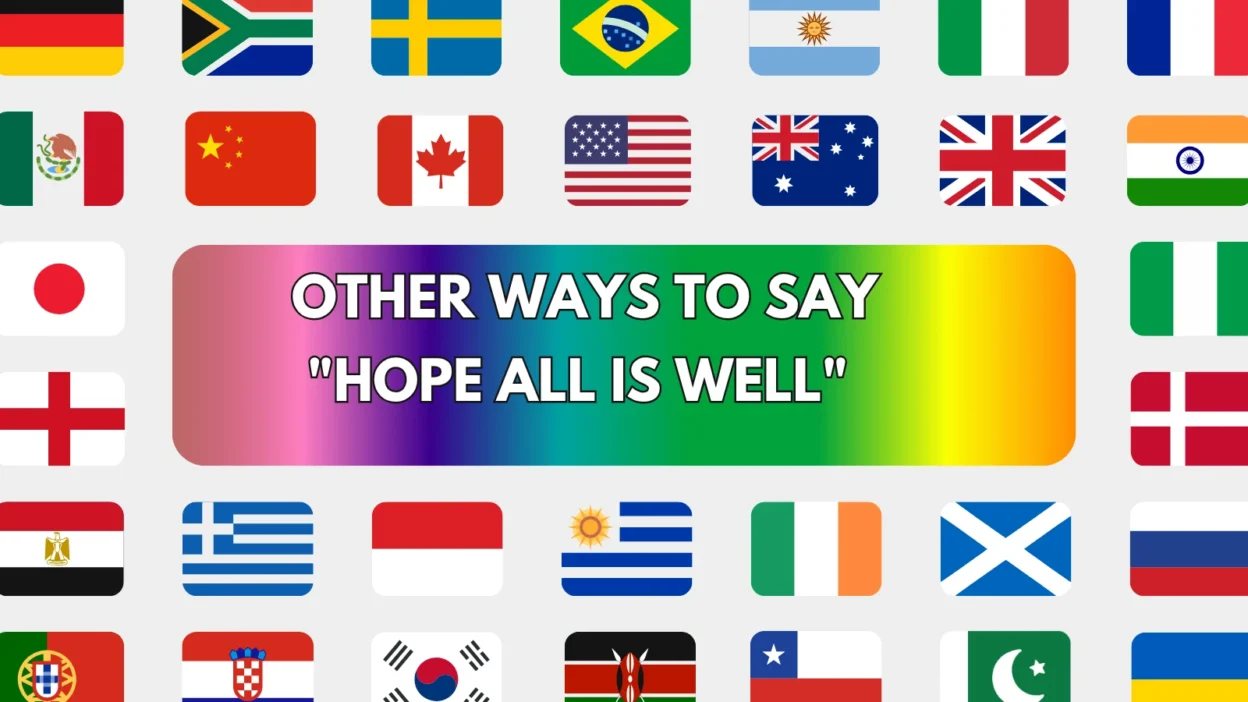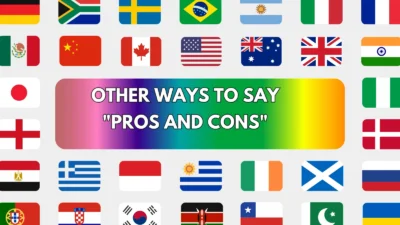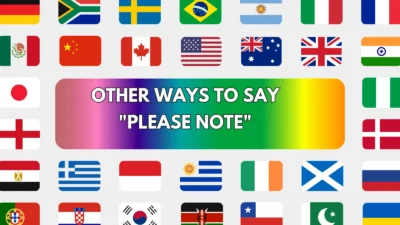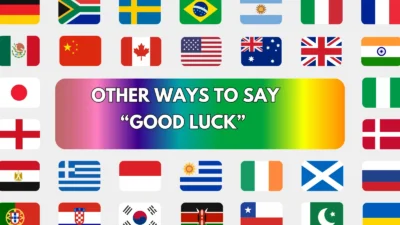The phrase “Hope all is well” is a common way to start emails and messages with warmth and politeness. It’s a nice way to check in, show care, or maintain rapport. However, when overused, it can feel robotic or generic — especially in professional emails.
To keep your writing fresh, personal, and thoughtful, here are 25 alternative ways to say “Hope all is well”, each tailored to different tones and settings. Whether you want to sound professional, casual, cheerful, or sincere, there’s an option for every situation.
1. I hope you’re doing well
Meaning:
A polite way to wish someone is in good health and spirits.
Detailed Explanation:
This is one of the most common and versatile alternatives, suitable for almost any email or message.
Scenario Example:
Hi Mark, I hope you’re doing well. I just wanted to follow up on the proposal we discussed.
Best Use:
Professional emails, general check-ins.
Tone:
Polite, neutral, respectful.
2. I trust you’re doing well
Meaning:
Conveys belief that the person is in a good state.
Detailed Explanation:
Slightly more formal and confident than “hope,” it adds assurance to your message.
Scenario Example:
Dear Ms. Lewis, I trust you’re doing well and enjoying the start of spring.
Best Use:
Formal emails, client communication.
Tone:
Professional, warm, respectful.
3. I hope things are going great for you
Meaning:
Wishes that life or work is going well for the recipient.
Detailed Explanation:
Adds more energy and friendliness than a standard greeting.
Scenario Example:
Hey Jake, I hope things are going great for you! I wanted to share an update on our project.
Best Use:
Casual emails, friendly messages.
Tone:
Upbeat, conversational, warm.
4. I hope this message finds you well
Meaning:
A formal and polite way to begin communication.
Detailed Explanation:
Common in professional emails, it adds a touch of courtesy and respect.
Scenario Example:
Good morning Sarah, I hope this message finds you well. I’m writing to confirm our meeting.
Best Use:
Professional writing, formal emails.
Tone:
Polite, respectful, standard.
5. I hope you’re having a great week
Meaning:
A positive wish regarding the person’s current week.
Detailed Explanation:
Gives your message a friendly tone and positive energy right from the start.
Scenario Example:
Hi Naomi, I hope you’re having a great week! Here’s the update we discussed.
Best Use:
Weekly check-ins, friendly emails.
Tone:
Friendly, cheerful, upbeat.
6. I hope everything’s going well on your end
Meaning:
Wishes that the recipient is managing things well.
Detailed Explanation:
A practical and balanced way to open both casual and professional conversations.
Scenario Example:
Hi John, I hope everything’s going well on your end. Just checking on the status of the invoice.
Best Use:
Business updates, neutral-tone messages.
Tone:
Balanced, polite, relaxed.
7. I hope you’re doing okay
Meaning:
Expresses gentle care or concern for the recipient.
Detailed Explanation:
Often used when someone might be going through something or you’re unsure how they’re doing.
Scenario Example:
Hey Mia, I hope you’re doing okay. Thinking of you and sending support.
Best Use:
Personal messages, thoughtful check-ins.
Tone:
Gentle, sincere, kind.
8. Hope you’re staying safe and healthy
Meaning:
Wishes for the person’s health and safety.
Detailed Explanation:
Common during times of health concerns, such as flu season or during global events.
Scenario Example:
Hi Team, Hope you’re staying safe and healthy during this busy season.
Best Use:
Mass emails, current events, caring outreach.
Tone:
Compassionate, responsible.
9. I hope life’s treating you kindly
Meaning:
Wishes that things are going smoothly for the person.
Detailed Explanation:
Adds a personal and thoughtful touch to a message.
Scenario Example:
Hello Rachel, I hope life’s treating you kindly. I’d love to catch up soon!
Best Use:
Personal emails, old friends, reconnections.
Tone:
Warm, personal, gentle.
10. I hope all is good with you
Meaning:
Simple way to express hope that everything’s fine.
Detailed Explanation:
A more casual variation of “hope all is well.”
Scenario Example:
Hey Adam, I hope all is good with you. Wanted to check in about next week.
Best Use:
Casual emails, internal team chats.
Tone:
Friendly, easygoing.
11. I hope your week is off to a good start
Meaning:
Wishes for a positive beginning to the week.
Detailed Explanation:
Great for sending messages on Mondays or early in the week.
Scenario Example:
Hi Dana, I hope your week is off to a good start! Let’s connect when you’re free.
Best Use:
Weekly updates, Monday check-ins.
Tone:
Positive, warm.
12. I hope your day’s going well
Meaning:
Simple, timely greeting based on the current day.
Detailed Explanation:
More immediate and direct than “hope all is well,” often used mid-day.
Scenario Example:
Good afternoon! I hope your day’s going well. Just wanted to confirm our call.
Best Use:
Mid-day messages, professional emails.
Tone:
Neutral, polite.
13. Wishing you well
Meaning:
Sends good thoughts or general support.
Detailed Explanation:
Often used in personal or supportive contexts rather than professional.
Scenario Example:
Wishing you well during this transition — take care!
Best Use:
Sympathy, farewells, encouragement.
Tone:
Sincere, caring.
14. I hope you’re having a productive day
Meaning:
Wishes that the person is having a good and effective workday.
Detailed Explanation:
Great for work-related emails with a motivating tone.
Scenario Example:
Hi Sam, I hope you’re having a productive day! I’m following up on our discussion.
Best Use:
Work emails, productivity check-ins.
Tone:
Encouraging, positive.
15. I hope you had a restful weekend
Meaning:
Wishes that the person enjoyed their time off.
Detailed Explanation:
Perfect for messages sent at the beginning of the week.
Scenario Example:
Hello Kelly, I hope you had a restful weekend. Here’s the updated document.
Best Use:
Monday emails, post-weekend follow-ups.
Tone:
Thoughtful, relaxed.
16. I hope things are good on your side
Meaning:
Casual way to express hope that everything is going fine.
Detailed Explanation:
Less formal and feels more like a natural conversation starter.
Scenario Example:
Hi Felix, I hope things are good on your side. Wanted to check in on the project.
Best Use:
Internal messages, informal business chats.
Tone:
Conversational, casual.
17. I hope you’re feeling great today
Meaning:
Expresses a cheerful wish about the person’s well-being.
Detailed Explanation:
Adds a bit of brightness and energy to your message.
Scenario Example:
Hi Julia, I hope you’re feeling great today! Just confirming our call at 2 p.m.
Best Use:
Positive tone emails, cheerful conversations.
Tone:
Friendly, upbeat.
18. I hope you’re doing fantastic
Meaning:
A more enthusiastic version of “hope you’re doing well.”
Detailed Explanation:
Shows a burst of positivity and genuine good wishes.
Scenario Example:
Hey Alex, I hope you’re doing fantastic! Let’s catch up soon.
Best Use:
Friendly messages, casual work emails.
Tone:
Energetic, upbeat.
19. I hope you’re having a smooth week
Meaning:
Wishes for a week free from stress or problems.
Detailed Explanation:
Subtle and thoughtful — especially appreciated during busy times.
Scenario Example:
Hi Lydia, I hope you’re having a smooth week. I’ve attached the updated slides.
Best Use:
Workplace emails, polite outreach.
Tone:
Professional, kind.
20. I hope you’re staying positive
Meaning:
Encourages optimism and mental well-being.
Detailed Explanation:
Useful during tough times or long projects to show support.
Scenario Example:
Hi Jamie, I hope you’re staying positive during the transition. Let me know if you need help.
Best Use:
Supportive emails, change communication.
Tone:
Uplifting, motivational.
21. I hope you’re having a good one
Meaning:
Casual way to hope someone’s day is going well.
Detailed Explanation:
“Good one” refers to their day, week, or situation — very conversational.
Scenario Example:
Hey, I hope you’re having a good one. Just wanted to remind you of tomorrow’s meeting.
Best Use:
Texting, casual emails.
Tone:
Relaxed, friendly.
22. I hope all is going smoothly for you
Meaning:
Hopes that the person isn’t facing issues or difficulties.
Detailed Explanation:
Adds a kind, smooth tone without being overly emotional.
Scenario Example:
Dear Tom, I hope all is going smoothly for you as the semester ends.
Best Use:
Formal messages, professional emails.
Tone:
Calm, supportive.
23. Hope you’re managing okay
Meaning:
Expresses concern or care about how someone is coping.
Detailed Explanation:
Shows empathy, especially in stressful or uncertain times.
Scenario Example:
Hope you’re managing okay with everything going on. Let me know if you need support.
Best Use:
Difficult situations, supportive communication.
Tone:
Caring, sincere.
24. Hope your day is treating you well
Meaning:
A creative way to wish someone a pleasant day.
Detailed Explanation:
Personifies the day to add charm and friendliness.
Scenario Example:
Hi Becky, hope your day is treating you well! I’ve attached the draft.
Best Use:
Friendly emails, internal team chats.
Tone:
Cheerful, creative.
25. I hope everything’s in order on your end
Meaning:
Polite and semi-formal way to check that things are going okay.
Detailed Explanation:
Useful in project updates or collaborative settings.
Scenario Example:
Hi Roger, I hope everything’s in order on your end. Let me know when you’re ready to proceed.
Best Use:
Workplace updates, task coordination.
Tone:
Professional, smooth.
Conclusion
The phrase “Hope all is well” is a good start, but having these 25 expressive alternatives lets you tailor your tone to match your relationship with the reader and the context of your message. Whether you’re writing to a colleague, friend, or client — choosing the right greeting adds warmth, professionalism, or charm.




